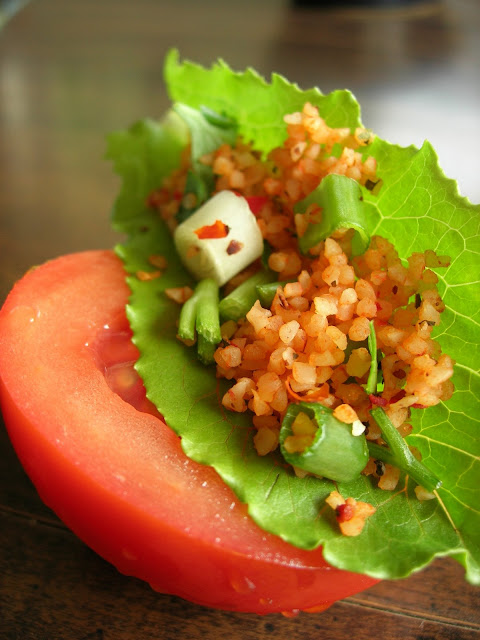
Usually fava beans and stuffed artichokes are cooked separately. They're both famous dishes of the Aegean cuisine. Fava beans can be found throughout Turkey, but it's hard to find fresh artichokes outside the Turkish Aegean coast. Tasty artichokes grow close to coastal lines in iodine-rich soil. Artichokes stuffed with fresh fava beans is one of the unique dishes of the Aegean cuisine. Their union is a feast that I first tasted in Izmir.
You can find both artichokes and fava beans frozen at big supermarkets or international markets.
1 lb peeled artichokes (7-8 pieces)
1 lb fresh fava beans.
1 onion, finely chopped
1/2 bunch green onion, finely chopped
2 tbsp dried mint flakes or 1/2 bunch fresh mint leaves, finely chopped
juice of 2 lemons
1/3 cup olive oil
1 bunch dill, chopped
1 tsp sugar
salt
1 cup hot water

-Heat oil in a broad pot. Stir in onion and green onion. Let them soften.
-Add fava beans, mint, and half of dill. Stir for 3-4 minutes.
-Add lemon juice, sugar, and hot water. Place artichokes in the pot: pointy sides facing up.
-Seal the pot with aluminum foil and place the lid. Cook on medium for 25-30 minutes or until beans are cooked.
-Once you turn it off, sprinkle salt. Let artichokes cool in the pot.
-When they're not hot anymore place artichokes on a serving plate and with a spoon stuff them with fava beans.
-Sprinkle the rest of dill on top.


This is a Turkish olive oil dish which is always served and eaten cold. It's great with yogurt or garlicy yogurt sauce on the side.
This recipe is for WHB is back at home at Kalyn's this weekend.











